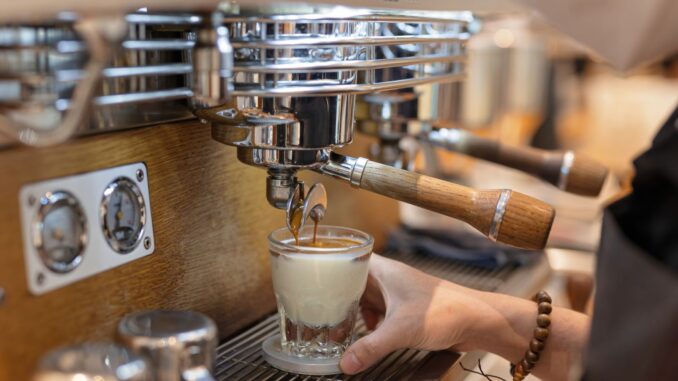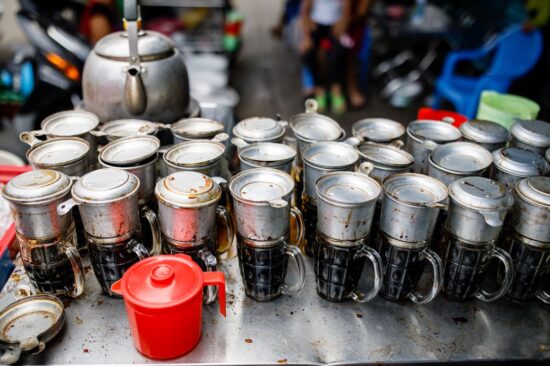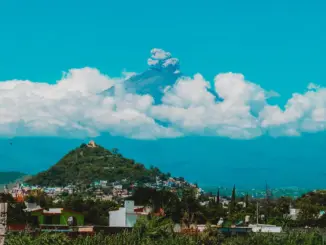
We learn about the arabica growing in Vietnam, a region historically known for robusta production, and the increasing preferences for specialty-coffee drinking in the country.
BY MOLLY HEADLEY
SPECIAL TO BARISTA MAGAZINE ONLINE
Photos courtesy of Mervin Lee
From the editor: Lately, we’ve been discussing the rise of specialty-coffee drinking in countries that produce coffee. Today’s story features Vietnamese coffee, particularly the growth in popularity of arabica and specialty brewing methods. The effort is combined amongst café owners and producers, which we detail in this two-part edition.
Anyone who has been to Ho Chi Minh City (aka Saigon) can attest to the fact that coffee is everywhere. Scooters traverse the city’s famous traffic with takeaway cups of ca phe swinging from their handles; street carts pour out thick robusta into pools of condensed milk, and one can almost hear the drip, drip, drip of coffee filtering through phins in cafés all over town.
But robusta and traditional Vietnamese brewing methods are no longer the whole story.

According to the specialty-coffee community in Ho Chi Minh City and the Da Lat region, what was once just a daily consumption commodity has started to turn into a more transparent collaboration between suppliers and consumers in Vietnam. An increasing number of growers, roasters, and baristas are working to update the profile of local Vietnamese coffee consumption by focusing on arabica varietals, high-quality robusta, and sustainable coffee-farming practices.
Vietnamese Coffee at the Local Café Level
This movement is the inspiration for the Hummingbird Cafe and Roastery in downtown Ho Chi Minh City. As owner Hoa Tran puts it, “The hummingbird is the only bird who can fly backwards. It’s the perfect illustration of the evolution of the coffee industry over the last decade. The attention of the consumer is switching from the front-line barista towards earlier stages of production such as origin, variety, and processing methods.”
“The specialty market is exploding,” confirms Will Frith, Vietnam’s unofficial “coffee diplomat” and founder of BEL Coffee and Wine Bar and the Building co-roastery in Saigon. “It’s not super mainstream, but it’s everywhere. Street carts even have pull-espresso machines now.”
Hoa agrees. “The coffee culture of Saigon has grown up in the city and is an essential part of the life of any Saigonese. What we’re seeing at this period of time is the mixture of consumers who see coffee as a morning booster and ones who consider coffee as a dedicated product. It’s changing and growing. That’s what we love about this city and what motivates us to keep moving.”
How Vietnam Became a Coffee Giant and Why Specialty Producers are Still Unicorns
Vietnam is the second-largest coffee exporter in the world, and number one for robusta exportation. The first coffee plants were brought into the country by the French in the 1800s, but production really picked up a century later when the Vietnamese government decided to focus on coffee agriculture as part of their post-war rebuilding efforts in the 1980s.
Most Vietnamese coffee is sent off green to be roasted elsewhere. A large percentage of Vietnam’s robusta is transformed into super-concentrated crystals to create astringent, chalky—but instant!—coffee in kitchens all over the world. Most insta-coffees don’t get a whole lot of love in the growing or roasting processes because, let’s be honest, no one expects them to taste all that good. Unfortunately, these coffee products, as well as scandals about chemical flavor additives being added to the coffee that does remain in Vietnam, have tarnished the image of Vietnamese coffee, and have kept the prices relatively low compared to other coffee-producing giants such as Brazil and Columbia.
Yet, despite these difficulties, the narrative is changing, and Vietnam has a strong cultural connection to its coffee that makes it worth fighting to better the beans.
We will continue this story tomorrow.
ABOUT THE AUTHOR
Molly Headley (she/her) is a freelance journalist who writes about the F&B industry and arts & culture. She’s lived in the countryside of Idaho, an arts conservatory in Michigan, the gritty-glitz of L.A., poetic Paris, foodie London, and exhilarating Ho Chi Minh City. Travel has always driven her next move, but home is wherever she can sit with her laptop and a really good cup of coffee. In addition to writing, she currently teaches cross-cultural communication and storytelling at Leonardo da Vinci University in Paris.




